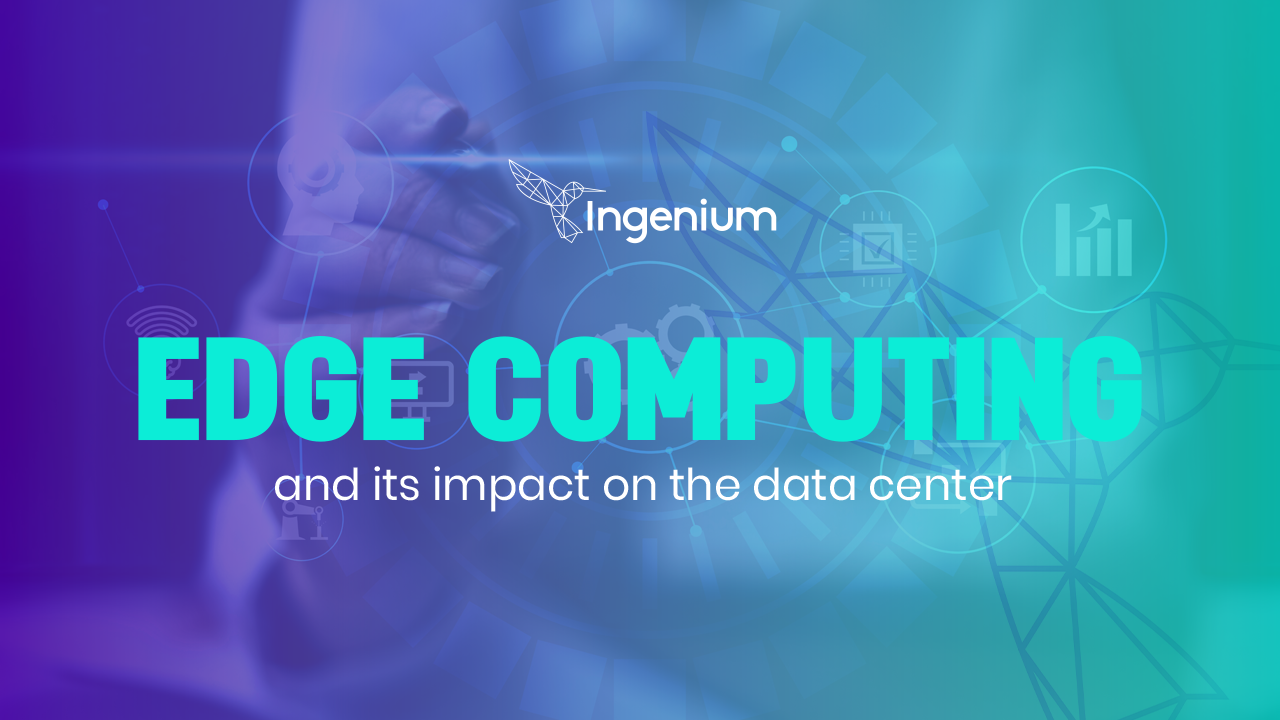As we know, the Internet of Things (IoT) and artificial intelligence drove an explosion of data that must be processed and transmitted to data centers. According to IDC a total of 26.6 billion IoT devices are active worldwide and this number will increase by 41.6 billion by 2025.
The powerful capability of edge computing promises to handle massive amounts of data close to its source, which would prevent large amounts of information from having to be transmitted or sent to the cloud or centralized data centers for processing. That proximity, coupled with the 5G digital infrastructure, will allow more efficient, fast and stable processes in the network, which will bring a series of benefits such as autonomy and near real-time decision-making for different industries.
IBM exemplifies the magnitude of edge computing with factory data processing. For example, a production line in a modern plant may have 2000 different equipment. Each piece could have 100 to 200 sensors that collect data continuously, generating 2200 terabytes of data each month. So it would be more cost-effective to process that data close to its generation source than to transmit it.
Maintaining traffic and data processing locally reduces latency, enables the deployment of new applications and services, and provides greater autonomy at the edge. It is also imperative to take advantage of the advantages offered by Artificial Intelligence and predictive analytics to increase productivity and monetize data.
Edge Data Center
According to Gartner, 75% of enterprise data will be created and processed at the edge by 2025, therefore, the push for edge data centers is becoming a reality in Latin America.
While traditional data centers allow for historical analysis, information management, and long-term storage, edge data centers make it easy to make decisions in near real-time, are easy to deploy, and are much smaller than a freight container.
According to IDC, the investment in infrastructure for Edge Computing in 2022 was $ 176 billion, and by 2025 it is expected to reach 274 billion, since by 2024 it is expected that 50% of the world's digital infrastructure will be at the edge and, by the end of that year, there will be 39 million IoT devices connected to the Edge, which gives rise to many hypersensitive applications to latency such as telemedicine, vehicle fleet management, self-piloted trucks, voice recognition, augmented reality, new services in the Metaverse, among many others that open the way to the Data Center Edge.
According to Statista, the total amount of data that is predicted to be created, captured, copied and consumed globally this year is 97 zettabytes, a projected number that will increase to 181 zettabytes by 2025. This amount of data means that in the region there is a greater investment in Edge infrastructure, deployment of 5G and the opportunity to create more edge data centers to meet growing demand.
In many cases, edge computing equipment will need to be located in "non-traditional" data center locations, such as spaces within factories, offices, and cell site locations, many of which will not have the ultra-high availability power sources that critical data processing operations demand for this new era of edge computing. Therefore, Edge distributed energy architecture solutions must be in place, in order to offer the ability to locate a scalable solution with its own power backup in locations where it is not traditionally available, ABB-ELPC shows the high growth in energy demand that Edge Computing is requiring.
Today's data centers are reporting power densities above 20KW per rack, it was not long ago that having 4KW in a rack was considered high density, with this new era of Edge Computing, those 4KW will be far exceeded, the new trends of Artificial Intelligence and Machine Learning are reaching more than 36KW per rack.
ABB with its Edge-Cabinet solutions provide up to 48KW per rack, which is required to meet the high energy consumption of these solutions, due to this high increase in consumption per rack, in order to meet the reduction of the carbon footprint, it is required to increase efficiency, data processing and storage platforms are adopting to be provided with 48VDC power, This represents 4 times less current and 16 times less losses in the distribution.
Ingenium is already working on several Edge projects Edge in the region, driven by the constant use of IoT and artificial intelligence in different industries. Contact us via email [email protected] or call us at +506 4001-9348 and we will gladly advise you.



